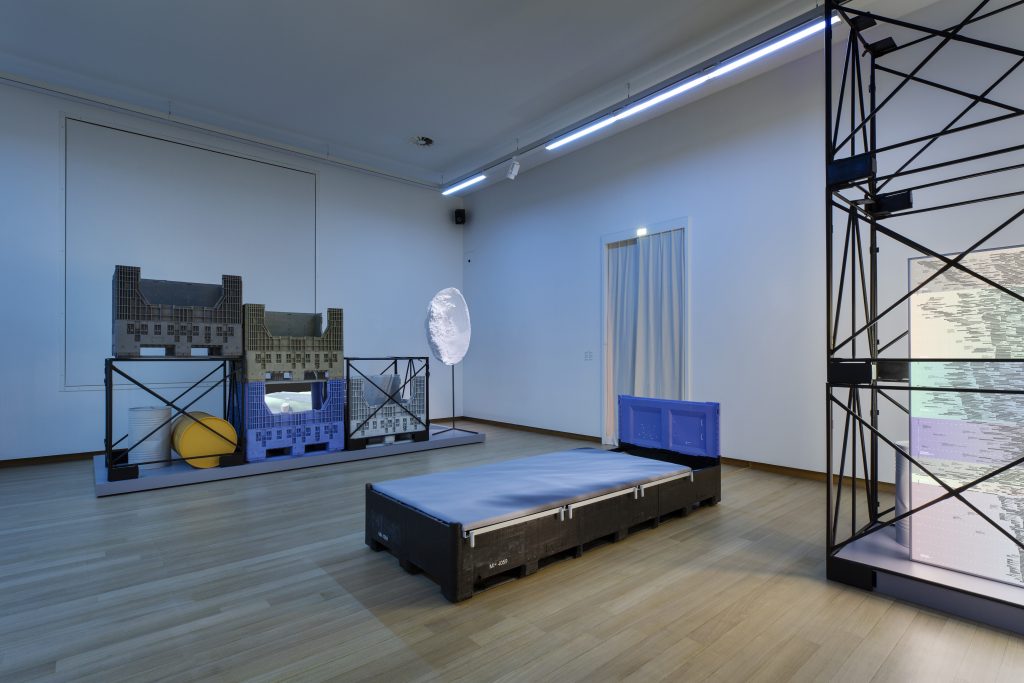Diving Reflex (Because We Learned Not to Drown, We Can Sing)
Prix de Rome 2019 exhibition at Stedelijk Museum Amsterdam, NL. 19.10.2019 until 22.3.2020. Diving Reflex (Because We Learned Not to Drown, We Can Sing), an installation by Femke Herregraven developed as part of the Prix de Rome exhibition at Stedelijk Museum Amsterdam.
BJ Nilsen proudly collaborated with Femke Herregraven on the Diving Reflex’s 10-channel immersive soundscape, animating the many different layers and stories contained therein. With Diving Reflex (Because We Learned Not to Drown, We Can Sing), Herregraven continues her research on the notion of the “catastrophe.” In classical Greek tragedy, this concept referred to the final resolution of the story and only became linked to natural disasters in the eighteenth century. On the basis of the fictionalized characters “The Last Man” and Elaine Morgan, she speculates about survival strategies, and uses the human diving reflex as a conceptual tool to explore the meanings of catastrophe. Catastrophe bonds, known as cat bonds, are central to Diving Reflex.
In Western European countries, the future is mapped, calculated, and traded on financial markets on the basis of predictions about potential catastrophes. This seems to have already clinched the fate of “The Last Man,” who symbolizes privileged individuals who do nothing but repeat these scenarios of scarcity and despair. His antithesis appears in the form of Elaine Morgan, a character based on the eponymous Welsh feminist writer who attributes human development to the evolution of isolated primates in semi-aquatic environments. According to this water monkey hypothesis, the “diving reflex” created a neurological connection between the throat, mouth, and brain. This allowed people to hum/sing, and eventually develop speech. While Morgan’s diving reflex gives rise to a new voice, “The Last Man” gradually loses his.
https://www.stedelijk.nl/en/exhibitions/prix-de-rome-2
